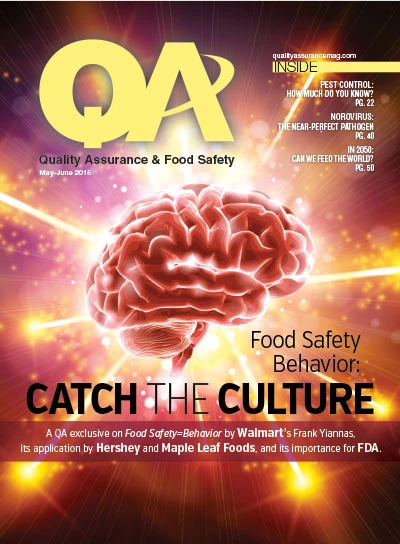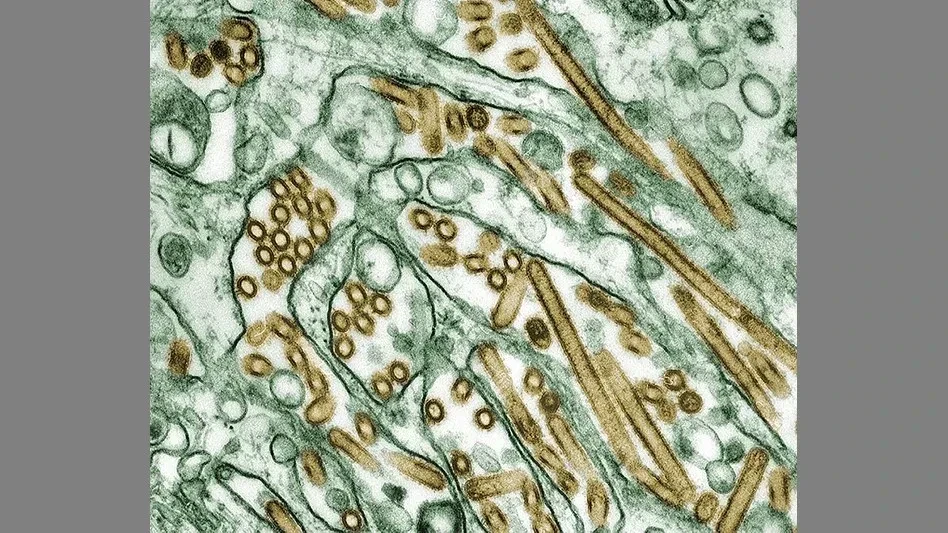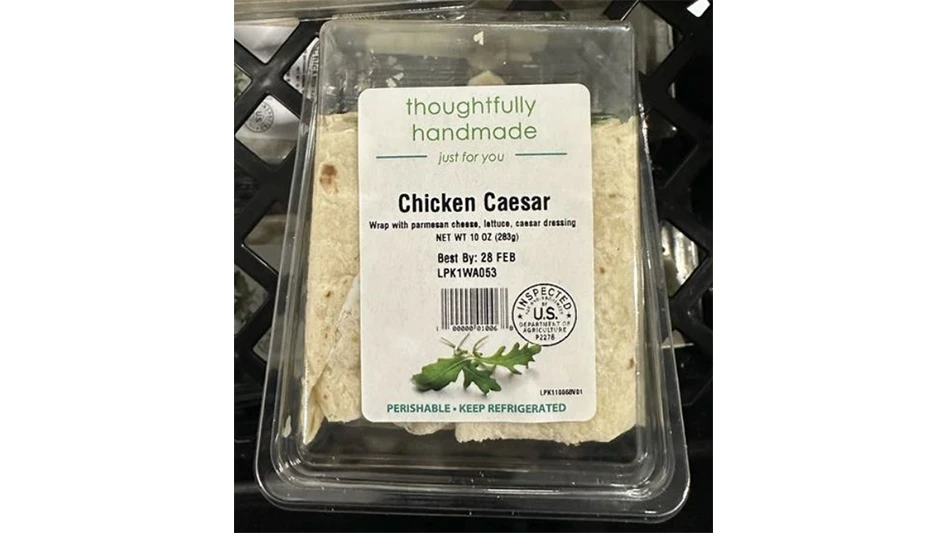 What does the term “food security” mean to you? What do you think it means to the average U.S. consumer?
What does the term “food security” mean to you? What do you think it means to the average U.S. consumer?
Although most quality assurance and food safety managers (now) understand its meaning and the difference between food security and food defense, the two phrases are often used interchangeably by the general population. In fact, even we in the U.S. food industry, termed many of our food defense programs that followed the 9/11 terrorist attacks of 2001 as “food security.” Additionally, as recently as 2007, FDA itself, issued the guidance document, “Food Producers, Processors, and Transporters: Food Security Preventive Measures Guidance.” So what is the difference?
- In 1996, the World Food Summit defined food security as existing “when all people at all times have access to sufficient, safe, nutritious food to maintain a healthy and active life.”
- Food defense, on the other hand, is defined by USDA as “the protection of food products from intentional adulteration by biological, chemical, physical, or radiological agents.”
With the terms defined, you may wonder how food “security” applies to you—or any U.S. food manufacturer.
One simply needs to know the 2050 projections to understand. That is: With the world’s population expected to reach more than 9.6 billion people by the year 2050, there is grave question as to whether we will be able to feed the world based on today’s methods of food production and resource consumption.
Why is it an issue? Food security is a complex problem due to interconnections and interdepencies of the global food system, notes the Cargill Fact Sheet, “Food Security: The Challenge.” While the earth’s food system produces enough to meet everyone’s nutritional needs, access to that food is uneven. Obstacles to food security also include production shortfalls, supply disruptions, food waste, government policies that inhibit trade and affect farmers, growth in nonfood use of crops, agriculture’s impact on the environment, resistance to agriculture technology, and price volatility.
As explained in “How to Feed the World in 2050,” from the United Nations Food and Agriculture Organization (FAO), “Hunger can persist in the midst of adequate aggregate supplies because of lacking income opportunities for the poor and the absence of effective social safety nets.” While it is a fact that 63% of the Earth’s undernourished population lives in Asia Pacific, such insecurity impacts the world.
There is also a fact of food safety in food security. Few things have the impact on the sustenance and quality of life as the ready availability of nutritious, safe food, said Paul Young, senior director, food & environment business operations, Waters Corp. “It is now generally accepted that an accurate definition of food security encompasses much more than simply availability,” he explained, adding, “Any country can only truly claim to be ‘food secure’ if it has a ready availability of affordable, safe, and nutritious food.” Even when the food supply is abundant, if it is contaminated, it can contribute to the overall disease burden in the country.
What are the solutions?
The introduction of a second Cargill Fact Sheet, “Food Security Solutions” perhaps says it all: “Cargill believes critical responses to food security challenges around the world include honoring comparative advantage by growing crops well suited to local conditions, enabling open markets, supporting smallholder farmers, fostering cooperation between the public and private sectors, encouraging investment, harmonizing food safety standards and reforming biofuels mandates. While focusing on long-term solutions is crucial for achieving food security, providing aid during emergency food shortages is critical as well.” Thus, we can’t take a position of isolation, simply ensuring that our own nation is fed.
 Retailers and Suppliers. “Few people disagree that improving the safety of the food supply is not a small task and is not one that can be achieved without the collaboration of all the relevant stakeholders,” Young said. Ultimately, however, it is the food retailers who “carry the can,” he said. “Either they can ‘own’ the entire supply chain (which is difficult given the global distribution of production combined with the complexity of food ingredients), or they adopt a collaborative approach to working with suppliers and knowledge sharing all the way back to primary producers.”
Retailers and Suppliers. “Few people disagree that improving the safety of the food supply is not a small task and is not one that can be achieved without the collaboration of all the relevant stakeholders,” Young said. Ultimately, however, it is the food retailers who “carry the can,” he said. “Either they can ‘own’ the entire supply chain (which is difficult given the global distribution of production combined with the complexity of food ingredients), or they adopt a collaborative approach to working with suppliers and knowledge sharing all the way back to primary producers.”
Suppliers also have a critical role, not only in ensuring the safety of the food they produce but in helping ensure the safety and security of the world’s food, he said. “By working directly with small producers (rather than excluding them from the supply chain), food companies have an opportunity to educate primary producers, improve the quality of products generally available, and create alternative sources of raw ingredients.”
Three prerequisites. FAO lists three prerequisites for global food security:
- Investing in sustainable agricultural production capacity and rural development, with targeted, deliberate action in comprehensive social services, including food assistance, health and sanitation, and education and training.
- Promoting technology change and productivity growth.
- Supporting trade, markets, and farmers. Many countries depend on international trade for their food security, so we need to move toward a global system that is fair, competitive, and contributes to a dependable market for food. Countries also need to prepare for shocks to the global system, including price spikes or localized disasters, through coordinated action and joint finance to assist those who are affected.
Date Labeling. More than one third of the food produced today is lost or wasted. One part of this, for which the food industry could contribute a solution, is that of the clarification and improvement of date labeling of foods. According to Bob Brackett, director of the Institute for Food Safety and Health at the Illinois Institute of Technology and IFT spokesperson, confusion over date labeling leads to billions of pounds of food waste every year. This includes:
- 25% of people discard food based on its sell-by date.
- 37% do so past the use-by date.
- 10% believe eating food past its best-by date is a serious health risk.
Increased Production. According to a presentation by FAO Assistant Director-General Hiroyuki Konuma on the status and outlook on food security, the world’s food production will need to increase by 60% (or 77% in developing countries if we were to expect them to bear the entire burden) to feed the world in 2050. Can we do it? “In principle, we have to, but the majority of it (90%) has to come from existing arable land through agricultural research and yield increase.” By increasing production, we can also decrease water use—of which current agriculture use accounts for 70%. Measures that could be taken to minimize the risk, according to Konuma, include:
- Production/Research. Not only do we need to share with developing countries, but also intensify sustainable agriculture and help advance agricultural research and technology.
- Trade. Establish more free trade agreements, long-term forward contracts, and food security partnerships; diversify trade sources; and establish emergency food reserves.
- Consumption. Provide nutrition education and promote diversified, healthy, sustainable consumption; reduce food losses and waste; and create awareness and advocate the importance of food and agriculture.
A Four-Step Approach. FutureFood 2050 recommend a four-step approach for industry:
- Collaborate to develop a simple workable solution to address the challenges faced by food manufacturers, retailers, government officials, consumers, and other stakeholders.
- Align to develop a more consistent date-marking system.
- Provide clear and simple consumer direction on food quality and safety.
- Conduct more research to evaluate and develop other indicator technologies related to food quality and safety.
“It has already been proven that mankind can rise to the challenge of increasing food output,” Young said. With available arable land diminishing in many parts of the world, there remain large tracts in places such as sub-Saharan Africa. “This time around an opportunity exists to learn from past experiences and bring about the production increases in a way that is more environmentally friendly and, most importantly, do so in a way that the producers of this new food have access to world markets to offer the added benefit of alleviation of poverty for the rural poor.”
If the world is unable to meet the production target of 2050 and there is a food shortage, we face a number of potential risks, Konuma noted. These include:
- Export ban by food-exporting countries to protect their own consumers.
- Uncertainty in securing food import.
- Food price hikes.
- Impacts on poor consumers.
- Social unrest, political instability…
According to the FAO, the world has the resources and technology to eradicate hunger and ensure long-term food security, but we need to mobilize political will and build the necessary institutions to ensure that investment decisions and hunger-eradication policies are made and effectively implemented.
The author is Editor of QA magazine. She can be reached at llupo@gie.net.

Explore the June 2015 Issue
Check out more from this issue and find your next story to read.
Latest from Quality Assurance & Food Safety
- Ingredion Invests $100 Million in Indianapolis Plant to Improve Efficiency, Enable Texture Solutions Growth
- Eagle Unveils Redesigned Pipeline X-ray System
- USDA Invests Up To $1 Billion to Combat Avian Flu, Reduce Egg Prices
- Washington Cats Confirmed with HPAI as Investigation into Contaminated Pet Food Continues
- USDA Confirms Bird Flu Detected in Rats in Riverside
- Kyle Diamantas Named FDA’s Acting Deputy Commissioner for Human Foods
- QA Exclusive: Food Safety Leaders React to Jim Jones’ Departure, FDA Layoffs
- Water Mission Wraps Up Ukraine Response, Transitions to Long-Term Solution





